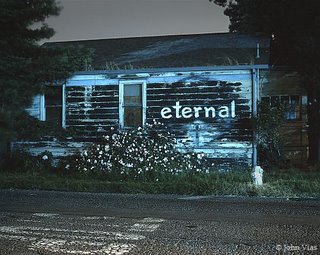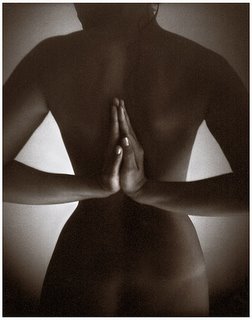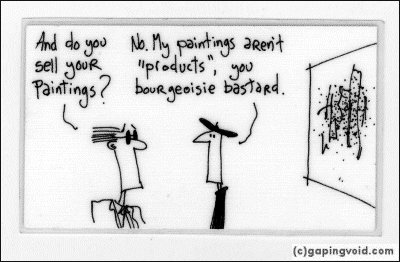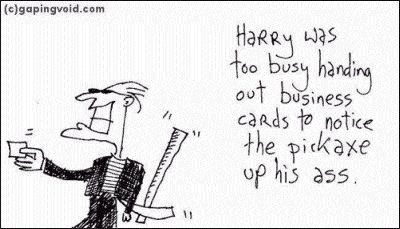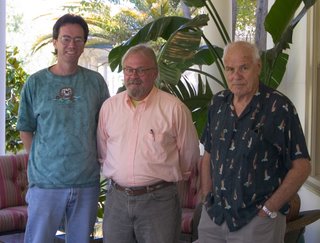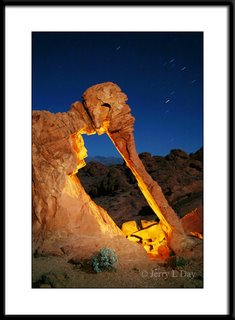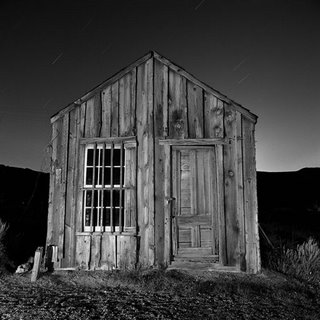Although
Steve Walsh and I have quite a few night photography friends in common, I first had the opportunity to go shooting with him only earlier this year up at Skaggs Island in southern Napa County. A few months earlier, Steve had gone shooting with our common friends, and he came back with the following photograph, which absolutely blew me away:
 (photo: Steve Walsh)
(photo: Steve Walsh)
There are many things I love about this shot: the abandoned building, the weeds, the broken sign, the control of hand-held lighting, and a definite night-type sky. And it's all in one shot!
 (photo: Steve Walsh)
(photo: Steve Walsh)
While most night photographers prefer to work with either existing artificial light, or use gel-colored hand-held flash equipment, Steve is one of the few nocturne-types who often uses a hand-held flashlight (not a flash... but a
flashlight) to carefully illuminate the subject. Steve says he has always been drawn to abandoned and industrial spaces, a characteristic he trace 's back to his New Jersey upbringing, where he was frequently mesmerized by distant factories viewed from the highway. Like many of us, he has found that night photography has become a convenient means of accessing these kinds of locations, since entry is often easier in the dark, and it has also allowed him to control lighting in ways that are just not possible in daylight.
If you've ever considered getting involved in night photography, there's two great reasons, right there! And if you want to browse some great photographs, check out
Steve's collection on Flickr.
